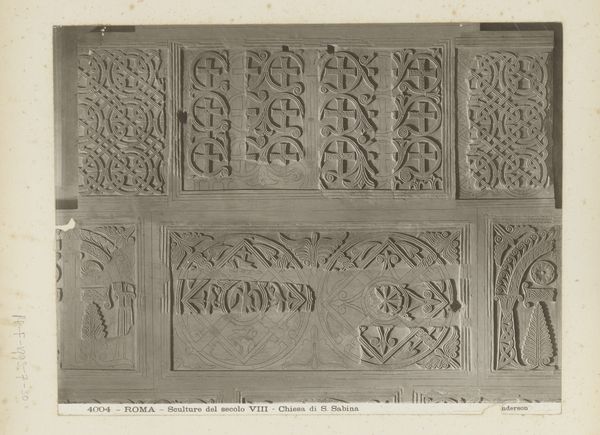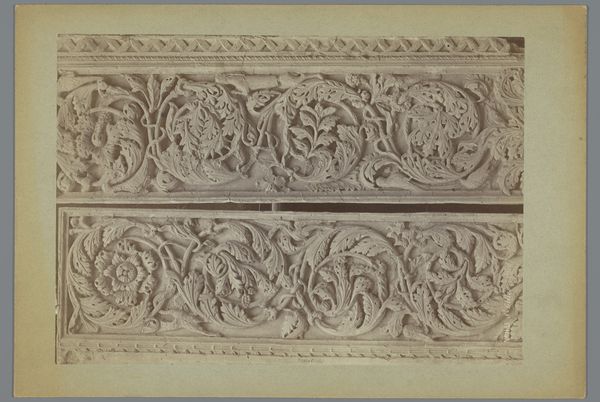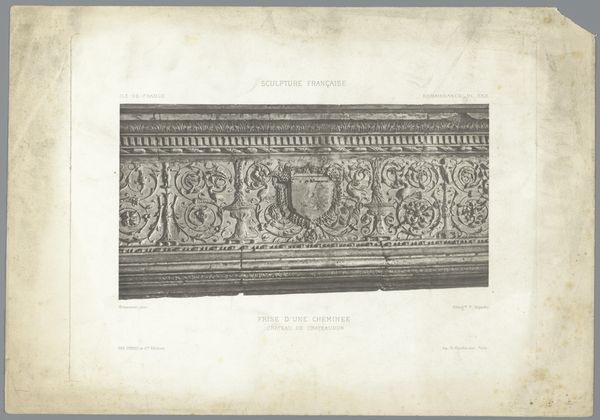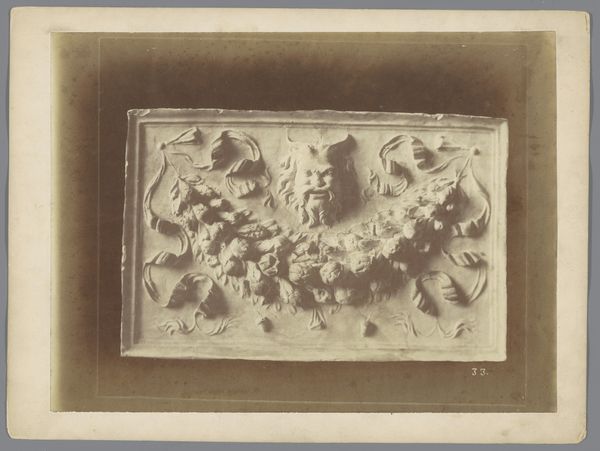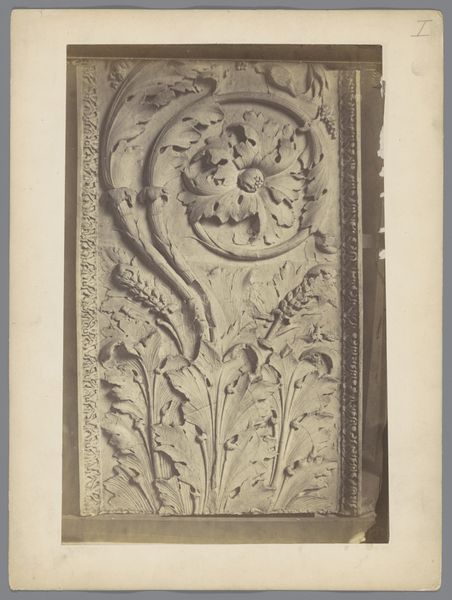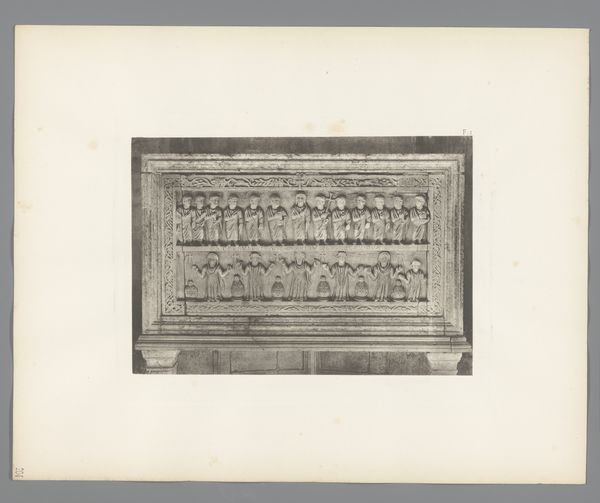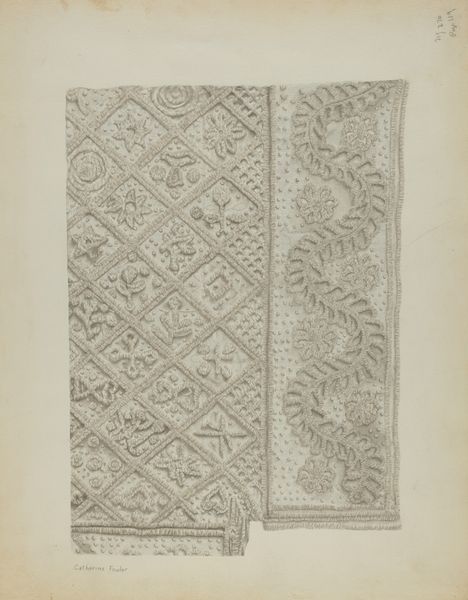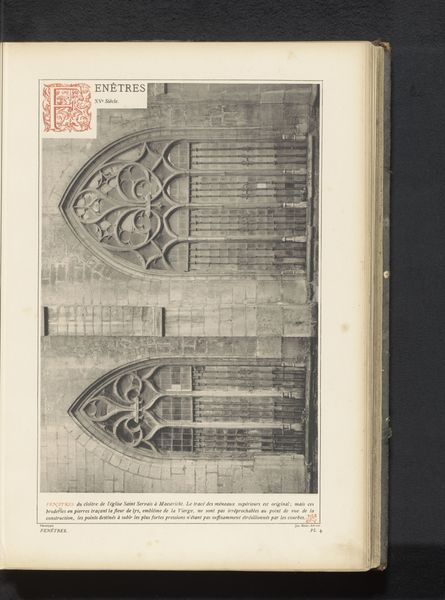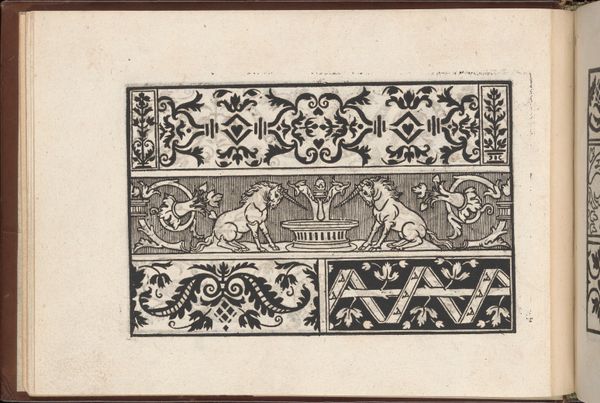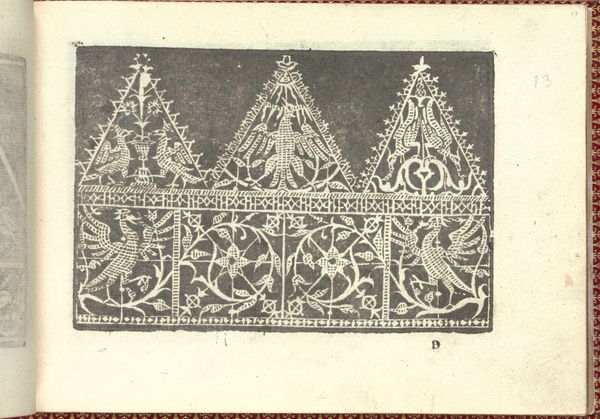
Reliëfs met plantmotieven, (vermoedelijk) afkomstig uit het huis van Agnès Sorel te Orléans c. 1875 - 1900
0:00
0:00
relief, photography
#
photo of handprinted image
#
natural stone pattern
#
aged paper
#
toned paper
#
relief
#
landscape
#
classical-realism
#
photography
#
coloured pencil
Dimensions: height 248 mm, width 351 mm
Copyright: Rijks Museum: Open Domain
Editor: This is a photograph by Méderic Mieusement titled "Reliefs with Plant Motifs, (presumably) from the House of Agnès Sorel in Orléans," created sometime between 1875 and 1900. It's striking how the aged paper almost makes the relief carvings appear ghostly. What draws your eye to this piece? Curator: The photograph’s reproduction is incredibly interesting; consider the labor involved in both the creation of the original reliefs and then this photographic documentation. It collapses the boundaries between "high art" sculpture and the more functional aspects of architecture and photography. Think about the social context: why document these reliefs in this way? Was it for historical record, or were these images circulating within design or craft communities? Editor: That’s a perspective I hadn’t considered. I was focused on the almost decorative quality of the plant motifs. How did the making of the image change the object? Curator: Precisely. The shift in medium changes everything. The materiality of the relief, originally tangible and structural, becomes mediated by the photographic process. It becomes a commodity, something to be consumed visually. Notice how the light and shadow highlight the texture but simultaneously flatten the image. This tension is crucial to understanding the power dynamics inherent in representation. How does the consumption of such images affect the perception of labor? Editor: So, by focusing on the photograph's creation and distribution, we uncover questions about value and accessibility. It encourages a more critical look at art's role in society. Curator: Exactly. It's not just about admiring the plant motifs; it’s about dissecting the entire system that brought this image to our attention. Understanding its journey helps to unearth stories beyond mere aesthetics. Editor: This makes me realize I often overlook the importance of process and social factors. Curator: We all do. And in understanding the materiality, labor and systems of art production, you understand the context more fully.
Comments
No comments
Be the first to comment and join the conversation on the ultimate creative platform.
